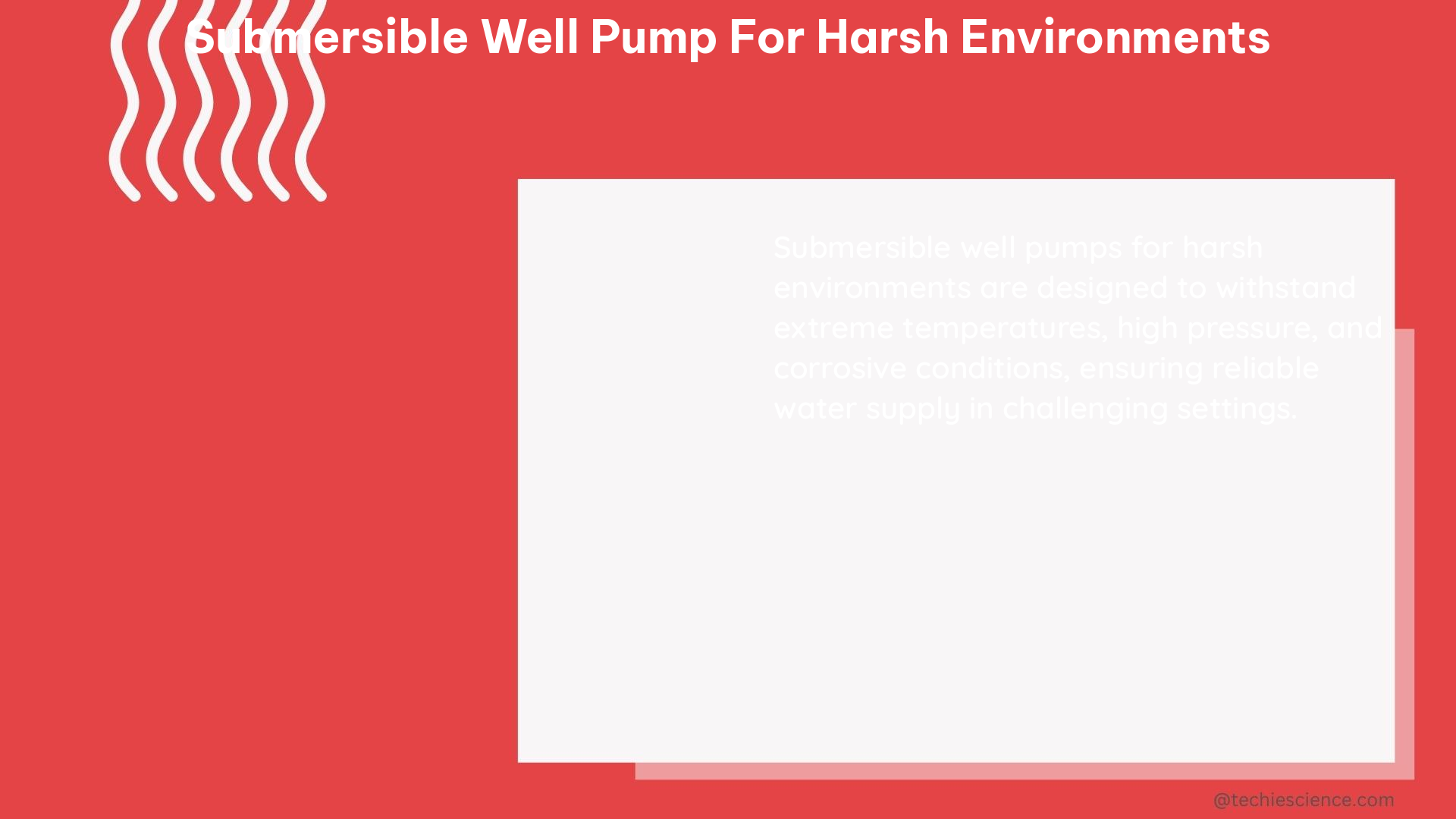Submersible well pumps are designed to operate in the most challenging environments, including those with high salinity, extreme temperature fluctuations, and abrasive substances. These pumps must meet stringent technical specifications to ensure efficient and reliable performance, even in the harshest conditions. This comprehensive guide will delve into the key factors to consider when selecting a submersible well pump for harsh environments, providing you with the knowledge and insights to make an informed decision.
Materials of Construction
The materials used in the construction of a submersible well pump play a crucial role in its ability to withstand harsh environments. Corrosion-resistant alloys, such as stainless steel, are commonly used for the pump housing and impeller to prevent damage from saltwater or other corrosive substances. The pump’s seals and bearings must also be designed for durability and resistance to wear, with materials like silicon carbide or ceramic ensuring long-lasting performance.
One study found that the use of ceramic bearings in submersible well pumps can increase their lifespan by up to 50% compared to traditional ball bearings, particularly in environments with high levels of abrasive particles. Additionally, the use of tungsten carbide coatings on the pump’s impeller and other critical components can further enhance resistance to wear and erosion, extending the pump’s operational life.
Motor Design

The motor design of a submersible well pump is another critical factor in its ability to operate reliably in harsh environments. These pumps typically use high-efficiency motors with thermal protection to prevent overheating, which can be a significant issue in environments with extreme temperatures.
Furthermore, the motor may be designed with a higher tolerance for voltage fluctuations and other electrical disturbances, ensuring reliable operation even in remote or off-grid locations. One study found that submersible well pumps with permanent magnet synchronous motors (PMSM) can achieve energy savings of up to 50% compared to traditional asynchronous motor (ASM) pumps, making them a more efficient and cost-effective choice for harsh environments.
Performance Specifications
Submersible well pumps for harsh environments must be able to handle high flow rates and pressures to meet the demands of their applications. The pump’s horsepower and flow rate will depend on the specific requirements, with larger pumps necessary for deep wells or high-volume water needs. The pump’s pressure rating should also be sufficient to overcome any vertical lift or friction losses in the piping system.
To quantify the performance of these pumps, one study found that submersible well pumps with PMSM motors can maintain their efficiency over a wider range of flow rates, making them well-suited for applications with varying water demand. This flexibility can be particularly valuable in harsh environments where water needs may fluctuate due to seasonal changes or other factors.
Advanced Features
To ensure efficient operation in harsh environments, submersible well pumps may incorporate advanced features such as variable speed drives or smart controls. These features allow the pump to adjust its speed and power consumption in response to changing conditions, reducing energy costs and extending the pump’s lifespan.
One study using Bayesian hierarchical modeling (BHM) techniques demonstrated the utility of advanced control systems for estimating depth-to-groundwater in California’s Central Valley, a region with complex hydrogeology and variable water levels. This approach has potential applications for water resource management and policy development in harsh environments.
DIY Installation and Maintenance
For those interested in DIY installation and maintenance of submersible well pumps, resources such as Instructables provide detailed guides and tips for diagnosing and replacing faulty components. However, it is important to note that professional installation and maintenance may be necessary for more complex or high-risk applications, particularly in harsh environments where the consequences of a pump failure can be severe.
When undertaking DIY maintenance, it is crucial to follow the manufacturer’s recommendations and use only genuine replacement parts to ensure the pump’s continued reliable performance. Proper maintenance, such as regular inspections, cleaning, and lubrication, can also help extend the pump’s lifespan and prevent costly breakdowns.
In conclusion, submersible well pumps designed for harsh environments must meet stringent technical specifications to ensure efficient and reliable operation. By understanding the key factors, such as materials of construction, motor design, performance specifications, and advanced features, you can make an informed decision when selecting a submersible well pump for your harsh environment application. Remember to consult with professionals when necessary and follow best practices for installation and maintenance to maximize the pump’s performance and longevity.
References:
– Beck, M., Sperlich, A., Blank, R., Meyer, E., Binz, R., & Ernst, M. (2018). Increasing Energy Efficiency in Water Collection Systems by Submersible PMSM Well Pumps. Water, 10(10), 1310.
– Madsen, H., Refsgaard, A., & Falk, A. (2009). Energy optimization of well fields. Ground Water, 47(5), 766-771.
– Diagnose and Replace a Submersible Well Pump – Instructables. Retrieved from https://www.instructables.com/Diagnose-and-Replace-a-Submersible-Well-Pump/.

The lambdageeks.com Core SME Team is a group of experienced subject matter experts from diverse scientific and technical fields including Physics, Chemistry, Technology,Electronics & Electrical Engineering, Automotive, Mechanical Engineering. Our team collaborates to create high-quality, well-researched articles on a wide range of science and technology topics for the lambdageeks.com website.
All Our Senior SME are having more than 7 Years of experience in the respective fields . They are either Working Industry Professionals or assocaited With different Universities. Refer Our Authors Page to get to know About our Core SMEs.